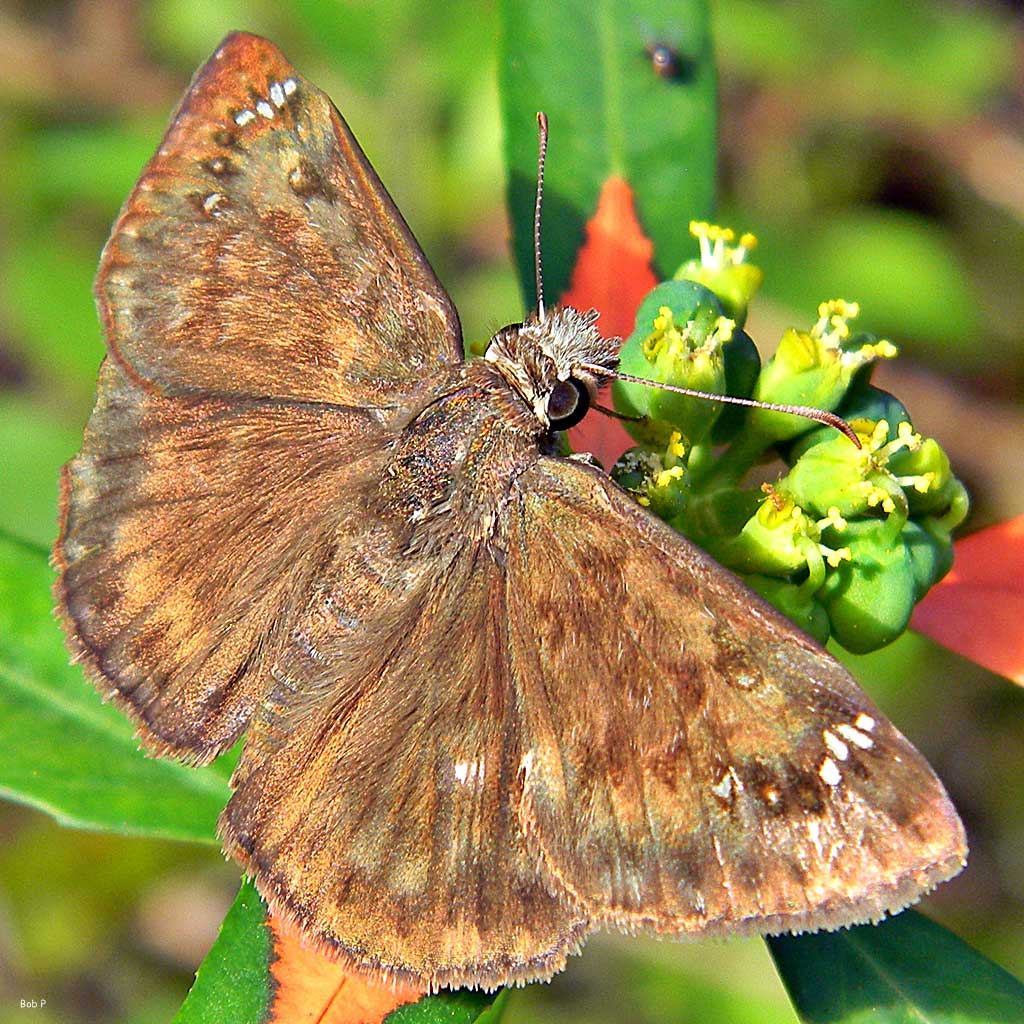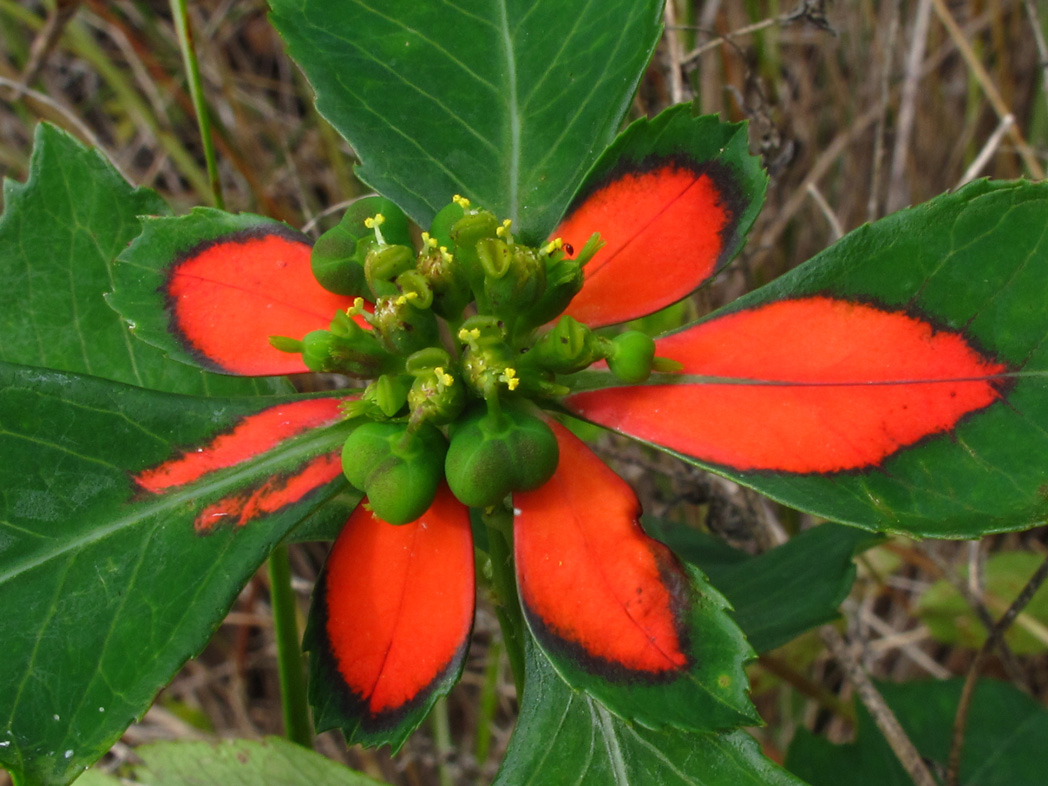Paintedleaf
Pictured above: Paintedleaf (Euphorbia cyathophora). Photo by Alan Cressler, courtesy of Lady Bird Johnson Wildflower Center, taken at Ding Darling National Wildlife Refuge, Bailey Tract, Sanibel Island. Click on terms for botanical definitions. View post as a PDF.
Paintedleaf (Euphorbia cyathophora) is an erect annual to short-lived perennial. Its tiny flowers are greenish-yellow and produce large, three-lobed green ovaries. Flowers are born in terminal clusters at the top of the stem and grouped in a cyathia, which forms a cuplike structure. Nectar glands occur at the base inside the structure. Surrounding the flowers are conspicuous leafy bracts with distinctively red bases, giving the plant its common name. Leaves are petiolate, can vary in shape from linear to oblong to fiddlelike, and may be lobed and/or toothed. They are alternately arranged. The stem is thin but sturdy. It is smooth and green, and contains a milky sap (an indicator of the Euphorbiaceae family). Seeds are oval, brownish-black, and born in sets of threes.
Paintedleaf occurs naturally on roadsides and in pinelands, hammocks and other disturbed areas. It can flower throughout the year, although it may be winter-dormant in northern Florida. Its tiny flowers attract butterflies and bees. The seeds are a favorite of mourning doves.
The genus name Euphorbia (as well as the family name Euphorbiaceae) refers to the Greek physician Euphorbus, who discovered many medicinal properties of plants in this genus. Paintedleaf was previously known by the scientific name Poinsettia cyathophora. Other common names include Florida poinsettia, Wild poinsettia, Dwarf poinsettia and Fire-on-the-mountain. It is related to the common “Christmas” poinsettia (Euphorbia pulcherrima), which is indigenous to Mexico and bears larger, more striking red bracts.

Family: Euphorbiaceae (Spurge family)
Native range: Throughout peninsular Florida and much of the Panhandle (particularly the western-most counties)
To see where natural populations of paintedleaf have been vouchered, visit florida.plantatlas.usf.edu/.
Hardiness: Zones 8A–11
Soil: Moist to dry, well-drained sandy soils
Exposure: Full sun to partial shade
Growth habit: 1–2+’ tall
Propagation: Self-seeding (seeds are difficult to start)
Garden tips: Paintedleaf’s interesting foliage provides a nice accent to a wildflower garden or native plant landscape, but it can be very aggressive as it readily self-seeds.
CAUTION: The milky sap is toxic and can irritate the skin.

